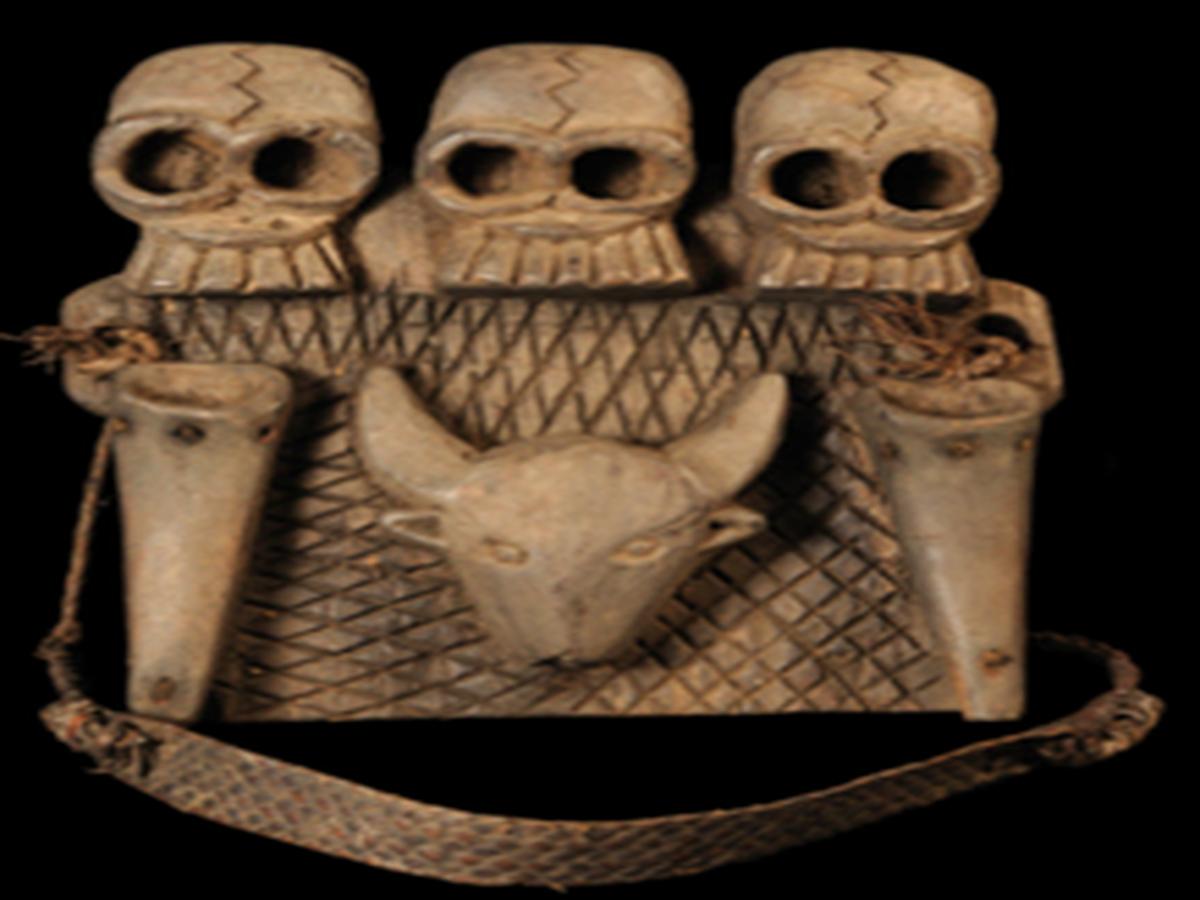State
Tribe Name
Art Type
short description
This fine wooden sculpture presents a slice of the Naga tribe's legacy of headhunting and warrior culture. It is made up of three wooden skulls, has a wooden Mithun (bos frontalis) head, and has two wooden horns, all mounted on a rectangular platform intricately engraved with traditional Naga motifs. Not to be left unmentioned, the work features a plaited bamboo belt and is further adorned with some animal hair to enhance its ceremonial and aesthetic appeal. The Mithun is the semi-domesticated bovine belonging to the hilly regions of Northeast India and serves as an important symbol for wealth, status, and communal pride among the Nagas. The wooden skulls and horns signify valor, power, and ancestral homage, used more frequently in association with morung (bachelor dormitories) or ka so morung (warrior huts) as a display of trophies of bravery during times of tribal warfare.
Thumbnail

Filter Postion
Left
Filter Background
Off
Theme
Filter Header Image

content
Image

description
This fine wooden sculpture presents a slice of the Naga tribe's legacy of headhunting and warrior culture. It is made up of three wooden skulls, has a wooden Mithun (bos frontalis) head, and has two wooden horns, all mounted on a rectangular platform intricately engraved with traditional Naga motifs. Not to be left unmentioned, the work features a plaited bamboo belt and is further adorned with some animal hair to enhance its ceremonial and aesthetic appeal. The Mithun is the semi-domesticated bovine belonging to the hilly regions of Northeast India and serves as an important symbol for wealth, status, and communal pride among the Nagas. The wooden skulls and horns signify valor, power, and ancestral homage, used more frequently in association with morung (bachelor dormitories) or ka so morung (warrior huts) as a display of trophies of bravery during times of tribal warfare.
The very presence of plaited bamboo strips—that craft deeply rooted in Naga culture—underscores this expertise in using the available natural resources for practical and ornamental purposes. The use of animal hair is another dimension marking such association with nature and that company in the realm of animism so crucial to the belief system of the tribe. This sculpture is a historical, traditional, and identity narrative of the Naga people beyond being a simple decorative object. It denotes their rich craftsmanship and culture symbolism, standing testament to custom and aesthetic expressions deeply rooted in the tribe.
The very presence of plaited bamboo strips—that craft deeply rooted in Naga culture—underscores this expertise in using the available natural resources for practical and ornamental purposes. The use of animal hair is another dimension marking such association with nature and that company in the realm of animism so crucial to the belief system of the tribe. This sculpture is a historical, traditional, and identity narrative of the Naga people beyond being a simple decorative object. It denotes their rich craftsmanship and culture symbolism, standing testament to custom and aesthetic expressions deeply rooted in the tribe.
Image Mode
landscape
promoted
On
Verified
Off
